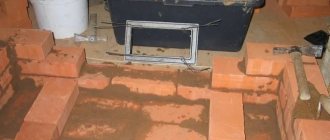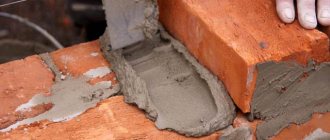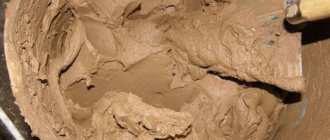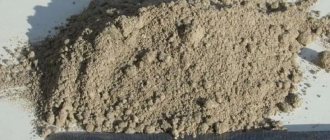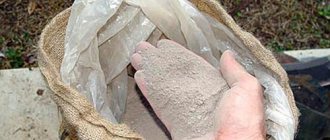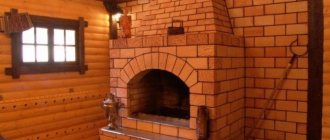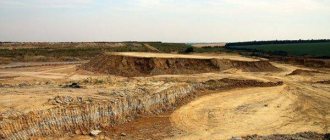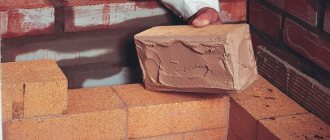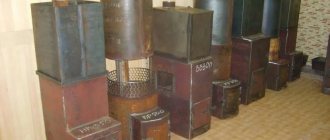Many owners of private houses independently build a bathhouse on their property. Although they follow construction technology, no one is immune from mistakes. A real craftsman can easily build a log house for a bathhouse and cover the roof, but making a stove requires a lot of attention and the necessary skills.
For example, you should know exactly what solution is needed for these purposes and how to properly prepare such a mixture. And even experienced builders cannot always cope with this. This is explained by the fact that the bulk of the mortar for fastening the brickwork should consist of clay, and not ordinary cement. Therefore, the work pays special attention to the optimal composition of the mortar for laying the furnace.
Furnace design and masonry mortar
Brick sauna stoves are large structures, their parts function in different conditions. The humidity level and temperature conditions at the base of the stove, next to the firebox and in the chimney duct are different. Temperature delta can reach from 0 to 1000 degrees or more. Smoke passes through the firebox and chimney. In addition, the pipe is exposed to rain, wind and cold. A universal mortar that would fit all these parameters and withstand them with honor has not yet been invented.
Cement or lime, either together or separately, cannot withstand such a temperature range.
On a note. Clay spreads in water, lime allows gases to pass through. Therefore, where the steam room, washing room and rest room use at least three types of masonry mixtures. They will all be different in their performance characteristics.
In addition, it should be borne in mind that fire-resistant solutions are expensive. It is advisable to use them where the maximum temperature develops. But for the foundation and main structural parts of the furnace, you can prepare cheaper mixtures. Clay is considered a relatively inexpensive building material. If you wish, you can obtain it yourself, and then the solution will be practically free. All that remains is to determine its quality and suitability for masonry and prepare it in a special way.
Clay sand mortar for furnaces is also sold and manufactured in factories. There is already a calculated ratio of components. The big disadvantage is their high price; the oven will turn out golden, because you need quite a lot of solution. For comparison: for 100 bricks you need about 2-3 buckets of the mixture. The exact quantity depends on the thickness of the seams and the density of the rows. Each master has his own style of masonry and, accordingly, the consumption of mortar.
If you recalculate factory mixtures to the actual scale of construction, then thrifty owners will not be pleased with the price. Therefore, you can take a closer look at budget masonry mortars that you can make yourself. It is also possible to prepare clay for ovens with your own hands; the composition of the solution will not be affected.
Results
- For furnace structures, you need a solution that can withstand temperatures of at least 1100–1200 C.
- To build the furnace itself, solutions are prepared from red clay. For the combustion chamber and chimney you need an option made of fireclay and sand. There is no difference between the use of quartz sand and ordinary river sand.
- The ratio of components in the material depends on the indicators of the components. Fat clay is mixed with 5 parts of sand, lean clay with 2.
- During production, verification tests are performed. If the solution is sticky, add sand; if it separates, add greasy clay.
- Other options for masonry - cement, lime-sand, are suitable only for the foundation or the outer part of the chimney.
What are masonry mortars?
The composition of the mixtures is not complicated: one or two components and water. Binding elements - clay, cement, lime. The filler is sand, which can be silicate or fireclay. It is important to take water that does not contain impurities or any technical additives. Water from a tap, well or open reservoir is suitable. But the ideal liquid for the solution is considered to be rain or melt water.
Porosity, gas conductivity, and thermal conductivity qualities of solutions vary. They are united by ease of application, good ductility and high strength after the solution hardens. Each type of solution must meet its declared properties.
Furnace masters classify solutions into the following categories:
- Fatty, with good plasticity, but susceptible to cracking after hardening.
- Normal - having average ductility and strength, with their help they create reliable masonry. This kind of clay should be sought for construction work.
- Skinny - fragile and low-plasticity, not durable, crumble after drying. Such clay is not suitable for the stove; it will immediately damage it the first time it is lit. It can only be used when brought to the desired condition in combination with other plastic components.
When the mixture contains one binder component (cement, clay), the solution is classified as simple. The ratio of components is designated as follows: 1:1, 1:2, 1:3. These designations help you understand what proportions are used in solutions. The first number indicates the binder component, the second the filler. When the solution is complex, consisting of two binder components (cement-lime mixture), the designation is as follows: 1: 2: 8. The first number is the most effective binder. Stove makers use mixtures that are normal in plasticity and strength. Fatty solutions are brought to the desired condition by adding sand; thin solutions are mixed with lime or clay.
If we exclude the reinforced concrete mortar used in the foundation, the following types of mortars are used when constructing the furnace:
- Calcareous . Used for brick plinths and chimney ducts. That is, it can be used in the construction of parts where there will be no heating of more than 450-500 degrees above zero. The seams with this solution will be strong, but fire resistance will suffer. It cannot be used to construct a chimney, since this part of the structure is exposed to aggressive atmospheric influences. Lime mortar cannot be called wear-resistant.
- Cement-lime . They are used in the construction of foundations. It is not heat resistant and is not suitable for chimneys. Withstands temperatures no higher than 250 degrees above zero.
- Cement-chamotte . They are made of cement and heat-resistant fireclay sand and water. Used to build a firebox. Such a composition will easily withstand temperature loads of 1300 degrees and above and will not collapse. Such a seam will not let smoke through, but condensation can escape through it. Heat resistance, fire resistance, and ease of use are features of cement-fireclay mortars. But it comes out at a rather expensive price. Therefore, when building stoves for baths, they often make do with an analogue, where cement is replaced with clay.
- Clay-fireclay . Such solutions are also used when laying the combustion chamber, as they have fire-resistant properties. It turns out much cheaper than the previous option. Clay is often a free element.
- Clay . They are used to construct the main structure of the stove, where heat is accumulated and transferred to the heated room. On the heat resistance scale, such solutions are in the middle position. The clay mixture will withstand temperatures of 1100 degrees. When the water evaporates, the mixture becomes solid, but under the influence of the liquid it will again become plastic. A very convenient property that allows you to sort out the stove for repair or restoration. To build a chimney, clay mortar for the stove can be used, but the upper part of the pipe cannot be laid with it, it will get wet.
This is the cheapest solution; it is used to lay the main part of the structure. The seemingly low cost of a ready-made, factory-produced clay mixture will actually add up to a considerable amount, since a lot of the mixture will be needed. But the components can be obtained for free. They are under your feet. Therefore, it makes sense to find out how to make clay mortar for laying a stove with your own hands; it doesn’t require much effort. Clay will also be needed when you need to make a mixture for laying the firebox.
Preparation of stove solutions: types, applications, recipes
When performing furnace work, different solutions are prepared for different purposes:
- foundation installation;
- furnace masonry;
- plastering and facing works.
For these purposes, solutions are used:
- clay;
- lime-clay;
- sand-cement;
- lime.
The stoves are placed on a clay mortar, adding a little salt or cement for strength. Many people use only clay with water, without additives. To make mixing the mortar easier, some stove makers make wooden flooring from boards with low sides. The wide working mixing area allows for better preparation of the solution.
The stoves are placed on a clay-sand mortar
First you need to determine how much material you will need. The calculation is as follows: when laying 50 bricks flat with a seam thickness of 3–5 mm, about 20 liters of masonry mixture will be required (we increase by 15–20% if we are building a Russian stove).
Clay mortar is used for the main structure of the furnace; it can also be used for lining. Consists of clay and water. Sometimes filler is added: sawdust, shavings, construction sand. The clay mixture is prepared in the following proportion: 2 parts clay, 1 part aggregate added. More often than others, clay-sand mortar is used for laying the stove.
The ingredients are mixed into a homogeneous mass until creamy. The masonry mass should come off the shovel well and leave no traces. Also, no separated water should appear on the surface - if this happens, you need to add sand. To give greater strength, salt is added to the solution: 100–250 grams per bucket of solution. Cement is used less often - 750 grams per bucket.
How to prepare mortar for laying stoves is demonstrated in the video. At the same time, you will see the consistency to which you need to soak the clay.
Sand-cement mortar is used to level out uneven surfaces and oven cladding (tiles, mosaics, stones). Cement mortar for the furnace is used to seal joints when laying the foundation. It is prepared as follows: measure out the required amount of construction sand and cement, mix well, fill with water to the desired consistency - such a state when it is sufficiently mobile and is squeezed out of the seam without much pressure. The proportions of materials depend on the brand of cement composition, most often 1:2.
Limestone is used as a mortar for plastering stoves, for laying foundations and pipes. Its preparation is completely different. First, the lime is slaked and kept in a special pit for about a week. After this, prepare a solution with sand. The ratio depends on the fat content of the lime (usually 1:2 or 1:3).
Lime-clay mortars with the addition of asbestos are also used for plastering the stove to give greater strength. The proportions of the solutions are as follows:
- clay-lime dough-sand-asbestos 1:1:2:0.1;
- clay-sand-cement-asbestos in the same ratio;
- gypsum-sand-lime paste-asbestos 1:1:2:0.2.
The preparation technology consists of combining all the dry ingredients and adding clay, gypsum or milk of lime diluted with water. Then the components are mixed until smooth.
There is a fireproof (fireclay) mortar for laying the core of furnaces. To prepare it, mix fireclay and fireclay in a 1:1 ratio, then add water (a quarter of the clay mass) and mix well.
This is what a good mortar on fireclay brick looks like
It is necessary to monitor the quality of the solution. After all, only a sufficiently plastic composition can ensure good adhesion of the stove masonry and tightness of the seams.
What tools will you need?
Before you start preparing solutions, you need to select a tool:
- a kneading oar (a specially hewn board with a handle);
- shovel;
- container for mixing the solution (a wooden trough or barrel, or a metal container);
- 5-6 buckets;
- trowel, which determines plasticity;
- a pair of metal sieves with 3x1.5 mm cells;
After the tool is prepared, you will need to prepare the components for the solution.
How to prepare material for work
Clay of any color is suitable for insulation work. The main thing is that it has as little sand in it as possible. It is better to take clay that takes a very long time to get wet. This is a criterion for small sand impurities in it.
The best option is to prepare the material in the fall, six months before future use. For clay, it is necessary to allocate a certain place where it will be exposed to frost, precipitation and other weather conditions. This way, in the fall and spring, the wind will be able to sift out the sand from the top layer. And frost in winter will add strength and durability to the material due to cycles of freezing and thawing.
In the spring, immediately before use, 3-4 days before use, the clay should be filled with water and covered with film. Let it become a homogeneous viscous material. Then it will be easier to lay and compact it. And its characteristics will improve.
Some owners prefer to make the clay mass 1-2 days before use.
This is not important. But it is better to let the clay brew to the required condition. You can easily check the readiness of the mass. Take clay into your fist and squeeze it tightly for half a minute. If a dense lump remains on your open palm and does not crumble, the material is ready for use. Otherwise, you should fill the clay with water and let it sit for a little more time. This takes from several hours to a day. And after such a procedure, checking the readiness of the clay should be repeated.
How to get clay
To get by on a budget, you should first stock up on clay and sand. With their help, they not only make solutions, but also regulate plasticity. When the furnace part is laid out, clay will be needed. What is she? This is a material created by nature itself, very plastic when saturated with water. Varies in fat content. If it contains more than 40 percent sand, it is skinny. It is not suitable for laying stoves in its pure form, since the seams will be fragile. The normal sand ratio is 37-38 percent. When there are fewer of them, the clay is normalized by mixing regular or fireclay sand.
Where can I get clay for laying a stove? There are several methods:
- Unfired factory raw brick is soaked by dipping it in a container of water. The softened mass is filtered using a fine mesh sieve. Then sand is mixed in. The desired consistency is obtained by adding the required amount of water.
- Sometimes local clay is sold very inexpensively by local residents. But this is very dirty clay, it will have to be cleaned and expressed several times.
- You can extract clay yourself. Its deposits are found almost everywhere. If you go 4-5 meters deep, you can dig it up in your own garden. But it’s even better to look for clay on river banks, in ravines and other places where the soil has been washed away. In the section of banks and ravines, clay is usually visible in a single layer. Approximately 5 meters are measured from the surface and a piece of rock is broken off for testing. If you crush a lump, it should crumple like plasticine and not stick to your hand. You can try rolling it into five-centimeter flagella up to 5 mm thick. If they bend in an arc and do not break, then it looks like clay. If not, then you can look in another similar place.
On a note. You need to know that colors may vary. It depends on mineral inclusions. And this does not affect the quality of the clay. It is believed that the best clay is white, that is, kaolin. It is used to prepare a clay mixture when laying the firebox.
Gray, bluish-gray and greenish-gray breeds are more common. But there is clay in brown-chocolate and earthy shades. This indicates that the composition contains iron oxides, which give this color.
Experienced stove masonry masters not only know how to prepare clay for laying a stove, but also determine its suitability immediately, without laboratory testing. But novice craftsmen must test the clay experimentally. To do this, you need to take 5 measurements of clay, half a kilo each (or a kilogram).
Heat-resistant, heat-resistant, fire-resistant - what's the difference?
Beginner stove makers often experience some difficulties associated with a correct understanding of terminology. Regarding mortars for stove masonry, the greatest confusion arises with the concepts of heat resistance, heat resistance and fire resistance of the material. These parameters are fundamental in the furnace business, so we will now try to clarify their meaning and clarify the understanding of this issue.
Heat-resistant is a material that can withstand heating to high temperatures. At the same time, during its subsequent cooling, the structure and chemical composition are preserved and no irreversible changes in shape occur. In addition, heat-resistant materials in a heated state are still able to withstand the original specified physical overloads without the risk of possible destruction.
The main property of heat-resistant materials is resistance to temperature, provided that the original mechanical properties are maintained. Heat-resistant substances and compounds have an order of magnitude lower thermal expansion index than heat-resistant ones. Such materials are used in the construction of not only furnaces, but also mechanical devices operating in extreme temperature conditions, while being subjected to powerful dynamic effects.
Finally, fire-resistant materials are heat-resistant or heat-resistant compounds that, among other things, calmly withstand the action of chemically active (often aggressive) substances contained in gaseous substances. Specifically in the case of stove masonry, this may be smoke or products of thermal decomposition of fuel.
All solutions and materials used in the construction of furnaces must be heat-resistant and fire-resistant. This requirement applies even to those elements that, during normal operation of the stove, do not heat up by more than four hundred degrees. No standard building mixture meets these parameters.
How to find sand
Sand is sold packaged or in bulk, already sorted into fractions. But it is possible to obtain it yourself and use it for stove mortar. So, white quartz sand is perfect for laying any areas of the stove; yellow sand cannot be used for the firebox.
On a note. If you decide to buy sand, then it is better to take the mountain or lake version; such a building material is best suited for constructing a furnace and will bind the components of the solution well.
It is recommended to make the seams of the stove masonry about 2-3 mm. Therefore, sand is suitable with a fraction no larger than 1.6-1.8 mm. Craftsmen purchase sand of different grains. It is believed that it grips better.
Where can you dig up sand yourself? In abandoned quarries, ravines, river shallows, along steep river banks. The purest sand is not at a depth of one meter or one and a half meters. Otherwise, you will have to wash it for a long time.
If the sand has foreign inclusions, it needs to be cleaned. To do this, sand is poured into a trough and filled with ordinary water. After this, the mixture is thoroughly shaken. The turbidity and dirt that floats out are drained. And so on until the water is clear. For sifting, take a metal construction sieve with cells of 1x1.5 mm.
The right job with the right solution
The characteristics of plaster are important for the quality of the coating, but without following the application technique, even an expensive solution will certainly crack during use. Therefore, if you do the work yourself, strictly follow the algorithm of actions.
Preparatory stage
After completion of the masonry, the stove should stand for at least a month until the end of the initial shrinkage.
Join the joints, deepening them by 5-10 mm to increase the area of contact with the solution.
Clean the wall from dust and dirt using a brush and heat the oven to 50-60⁰C.
Moisten the masonry thoroughly with water so that the brick does not absorb moisture from the plaster, speeding up its drying.
Reinforcement of the finishing layer
photo from the site https://obustroeno.com
It is necessary to reinforce the surface, and there are several options for performing this stage:
Metal soft mesh. The metal must be galvanized so that the contours of the mesh do not show rust stripes. You need to take care of attaching the mesh at the stage of masonry, leaving wire outlets for it. If this has not been done, then the mesh will have to be secured with screws or nails into the seams.
Burlap or gauze. Opponents of this method of reinforcement point to the flammability of burlap, while supporters talk about environmental friendliness and the impossibility of ignition in clay. Having decided to reinforce the plaster with burlap, it is cut into squares, dipped in a liquid solution and glued to the wall after spraying.
Plastering
photo from the site https://kursremonta.ru
The plastering stage will require work to be performed in the following sequence:
Padding. You need to use deep penetration primers and prime the surface before applying each layer.
Spray. To spray, use a brush and the same solution as for plaster, only diluted with water to the consistency of liquid kefir. This is done to fill small irregularities and roughness, so as not to leave air voids that will lead to cracks.
Plaster. The solution is applied using a trowel and smoothed with a trowel, the thickness of each layer is 2-3 mm, while it is advisable to keep the total thickness of the plaster within 10-15 mm.
Covering. It is also done with a liquid solution, after which it is rubbed with a trowel. In the case of clay mixtures, grouting can be done with a rag soaked in the solution.
The stove cannot be lit for the next three days, and the first heating should not exceed half the maximum power of the stove.
If the finished plaster does crack, the crack must be repaired. To do this, it is expanded with a spatula, the surface is wetted and filled with the same composition that was used during the main work. Don't forget about primer and grout.
Now you know exactly how to make a mortar for plastering a stove, and let it please you with its impeccable appearance and cozy warmth for many years to come.
How to determine the plasticity of clay
To understand how to properly dilute clay for laying a stove, clay samples must be placed in various containers. Add water gradually to obtain a plastic solution that does not stick to your hands, resembling well-kneaded dough. Each sample is marked with a serial number.
Then proceed as follows:
- the first sample is left in its original form;
- 10 percent sand is added to the second sample;
- for the third sample - 25 percent;
- by the fourth - 75 percent;
- to the fifth - the same amount as the volume of clay.
Sand is introduced gradually, in portions, stirring after each addition. When a lot of sand is added, you need to increase the volume of water.
Before soaking clay for laying a stove, you need to determine its quality. As samples, 2-3 balls with a diameter of 50 mm are made from each sample, as well as cakes 20-30 mm thick. Then they should be dried in a place where there is no draft. After ten days have passed, the cakes and balls need to be checked to understand where the best composition is. To do this, each ball is dropped from a meter height onto the floor. It should not break or crumble when compressed. Dried samples should not have large cracks. For the experiments to be successful, it is necessary to prepare several balls of each type of clay to be sure.
There are two more ways. First, each sample is rolled into balls 50 mm in diameter. They are placed under a press, the role of which is performed by two planks. If, after compression, the ball shrinks twice and small cracks appear, the clay is plastic. If shrinkage occurs only by a third of the diameter, cracks will be noticeable; this is clay with medium plasticity. Skinny clay will shrink only one quarter or less, or it will simply crumble.
The next method is with flagella up to 20 mm thick and 250 mm long. They need to be stretched one by one and bent around a wooden rolling pin or a shovel handle (50 mm in diameter). Skinny clay will not withstand the test; the flagellum will immediately break without stretching. With an average degree of plasticity, the flagellum will begin to tear, and the stretching segment will become 20 percent less in thickness. The folds of the “sausage” will crack. The plastic clay will not break off, but will smoothly bend around the handle.
Furnace mortars are made from clay, which has average plasticity. It is not difficult to determine the amount of solution required; its volume is a tenth of the volume of the oven.
Why do you need a clay castle around the foundation?
The design of the clay castle itself performs several functions:
- Protection of the foundation from moisture.
- Additional dense cushion for the sole of the base.
- Reducing the pressure of groundwater and melt water on foundation walls.
Of course, modern materials cope with waterproofing several times more effectively.
But a clay castle has the main advantage of being cheap and accessible. After all, you don’t have to buy clay, but collect it from reservoirs or quarries. This material has several more pleasant features:
- fat content, which makes it possible not to use additional materials in the sole area for insulation from moisture;
- the density of the dried substance prevents the foundation from cracking or crumbling;
- ease of use, meaning any amount of material can be used for the lock.
But for all its splendor, clay also has some not very pleasant sides:
- Short-lived protection - after 5-6 years the lock should be rebuilt, removing the previous layer.
- Not always good quality - due to sand impurities, the clay becomes less fatty and freezes strongly, losing its properties.
- Low waterproofing of vertical surfaces - additional waterproofing is required for the external and internal walls of the foundation.
Even with such nuances, you should not refuse a clay castle around the foundation.
This will save significant amounts of money on insulation and other construction work. It is worth knowing that the closer the groundwater comes to the foundations, the more short-lived the castle will be. Therefore, to drain water from foundations, drainage is often performed along the entire perimeter near the base of the house.
How to prepare a clay mixture for laying a stove
Before soaking clay for the oven, you need to prepare convenient containers. This could be a barrel or a trough. The clay is loaded into a container and filled with water for 2-3 days. If during this period it does not completely soften, then you need to leave it for another day.
How to make clay for laying a stove so that it meets the standards and requirements? The softened clay must be mixed very well. The result should be a mass similar in structure to thick sour cream. If necessary, add water. Then the creamy mixture needs to be strained. The ratio of sand and clay is determined through experiments.
Clay mortar for laying a stove is made as follows. Pour the components into the container gradually, distributing them in layers. Then you need to mix everything thoroughly, adding water as needed. Do this until the solution becomes a homogeneous loose mass. If you stick a shovel into such a mixture, the solution will slowly slide, but not spread. Such a clay batch is stored by covering the top with roofing felt, polyethylene or plywood. The shelf life is unlimited, you just need to add water when needed.
There is another way, but it requires physical strength. There is no need to sift anything. Sand in the required quantity is laid out in ridges on a wooden board. You will need a platform of approximately 1.5x1.5 meters. The width of the ridges is about 40 cm, the height is no more than 25 cm. A depression is made exactly in the middle of the ridge, which is filled with softened clay. The raw materials are shoveled, and sand from the edges is poured into the clay until everything becomes a homogeneous substance.
After this, a ridge is formed again, which is cut with force with the edge of a wooden oar. Use frequent blows to break up all the lumps. Add water if necessary. This method is not used often. This folk method is used to prepare small portions of the solution.
Crack repair work
This process can be divided into several stages:
- Diagnosis of existing damage.
- Preparation of the solution.
- Plastering the heating structure.
Stage one – damage diagnosis
Before coating the stove, you should assess the extent of the existing damage in order to find out the scope of the work to be done. If the cracks are minor, then surface measures will be sufficient. To do this, the bricks are cleaned of finishing materials and plaster, the damage is repaired and the stove is plastered.
Stage two - preparing the solution
Regardless of the size of the damage, you need to prepare a special solution to putty the oven. Depending on financial capabilities and the availability of materials, certain types of mixtures are used when carrying out repairs.
They are:
- from fireclay clay;
- from sand and ordinary clay;
- in the form of grout for the stove - you can make it yourself or buy it ready-made;
- from oven glue.
How to make lime mixture
Using lime mortar, they lay the foundation of the stove and the chimney pipe on the roof. It should be taken into account that when slaked, lime increases 3-5 times. Therefore, take the appropriate container.
Lime is well filled with water. Mix the solution and break the stones until the mixture resembles thick sour cream. Gradually add sand until pieces of the mixture begin to stick to the shovel. This solution can be stored for a long time, adding water as necessary.
This is a rather difficult procedure; you can buy a ready-made lime mixture. As a rule, you won’t need much lime when laying a stove. This material behaves very well when working; there are no special problems with preparing lime-based solutions.
No. 6. Cement-lime mortar
Cement-lime mortar is even stronger than lime mortar, and you will need absolutely no cement, and the higher its grade, the less it will be used. You will need a ratio of cement, dough and sand of 1:2:10. First, water is added to the lime dough, mixed and cement is added, without stopping stirring, then sand is added and the solution is mixed. It is better to determine the exact quantities of sand and water in a small test batch.
How to prepare a mixture for laying the firebox
How to make fireproof mortar for a stove so that the stove lasts a long time? To lay the firebox, use plastic white clay, which can be yellowish or gray. The role of filler is performed by fireclay sand. It is made from broken fireclay bricks, which are then crushed by crushing. It brings the solution to a higher level of resistance to high temperatures. This sand is used instead of the usual sand to prepare solutions intended for combustion chambers, which are laid out of fireclay bricks.
To reduce the cost, you can take fireclay sand mixed with ordinary quartz sand in equal proportions. The mixture will still retain its fireproof properties.
Plastic clay does not need additional testing. It is kneaded in clean, soft water. To facilitate the kneading procedure, construction mixers are used.
If you know what solution to lay the stove on and how to get cheap building material, you can save a lot when building a sauna stove.
How to mix mortar for plaster?
Fireproof mixture for masonry is not the only thing you can make with your own hands at home from fireclay sand.
It can be used to prepare decorative or intermediate type plaster. This composition is indispensable for repairing any premises if prepared correctly. Fireproof plaster will increase the reliability of the stove masonry if it is applied to the surface of the stove. The components for preparing the plastering solution are as follows:
- fireclay sand;
- quarry sand;
- Portland cement;
- salt.
We list the main recommendations for use.
It is very important not to rush, add water little by little in order to achieve a truly optimal composition and not overdo it. The right mixture should not be too light or resemble pancake batter.
This error is corrected by introducing an additional amount of proportional mixture without water. The ideal consistency of fireclay plaster resembles thick (but not excessively!) sour cream. In fact, it is similar to masonry mixture, but more pliable, easier to work with, and plastic. To work with plaster, you will need spatulas, the length and size of which are not the same. In addition, prepare a serpyanka, that is, a mesh tape that will make the seams stronger and help increase the adhesion of the composition and the surface. Under no circumstances apply the composition in a thick layer and tightly, otherwise this will affect the rate of heat removal and may impair the quality of work.
Additives to the solution
Determining the fat content of a solution using a paddle.
A fairly reliable solution for laying a furnace is obtained by using refractory clay. In this case, clay and sand are mixed in equal quantities. However, it is not always possible to use refractory clay, and you have to use ordinary clay or loam. If, when adding them, doubts arise about the strength of the composition, then strengthening additives are recommended.
Most often, a solution of table salt or Portland cement from M200 to M400 is added to the mixture. In such formulations, it is enough to add 0.1 kg of salt or 1 kg of cement per 10 kg of clay. It is advisable to check the plasticity of such a solution using the method described above.
Adhesive for tiling stoves - manufacturers
Mari (brands) are popular among professionals and ordinary users:
Ceresit CM 16 Ceresit CM 16 Elastic tile adhesive “Flex” (Ukraine, under German license, 600 rub./pack). Ceresit Flex is designed for installation on complex deformable substrates, as well as using the tile-on-tile method.
Glue “Terracotta” Reinforced heat-resistant glue “Terracotta” (Russia, 550 RUR/pack). Used for cladding with natural stone and terracotta ceramic tiles. Chamotte kaolin dust added to the adhesive solution makes it possible to perform cladding without lining the furnace and obtain an identical result. Operating temperature up to 250 °C. Glue SCANMIX FireSCANMIX Fire (Finland, 600 RUR/pack) has a high softening temperature – 1,200 °C. Scanmix is indispensable for lining furnace outlets and solid fuel stoves. The solution is intended for laying and repairing stoves, as well as for laying tiles on simple surfaces.
Plitonit SuperFireplace Plitonit SuperFireplace (Russia, 455 RUR/pack) allows you to lay the mortar in a thin layer due to the presence of fine-grained fillers. Permissible temperature of use is up to 1,200 °C.
Tile adhesive Ivsil TermixIvsil Termix (Russia, 460 RUR/pack). Highly elastic adhesive. Operating temperature up to 250 °C, which allows it to be used on stove surfaces away from the firebox and on fireplaces with a closed firebox. Ivsil Thermix adhesive is intended for durable substrates.
Tile adhesive “Pechnik”Glue “Pechnik” (Belarus, 260 RUR/20 kg). Maximum operating temperature up to 250 degrees Celsius.
Glue for stove tiles Bergauf KERAMIK TERMOBergauf KERAMIK TERMO (Yunis, Russia, 450 RUR/pack). Bergauf Ceramic Thermo glue is used for simple surfaces with heating temperatures up to + 180 °C.
Glue SILTEK T-84SILTEK T-84 (Ukraine, 360 RUR/pack). Siltek adhesive is used for cladding surfaces exposed to temperature changes within the range of – 30°C – +150°C.
Special ready-made adhesive solutions or mastics
The line of these mixtures is represented by a smaller number of brands. This is due to the fact that the adhesive ability of the finished solution is lower than that obtained from a dry mixture. Nevertheless, the following gained the favor of the masters:
Adhesive mixture “Parade K-77” “Parade K-77” (Belarus, 300 rub./15 kg.). It is used on surfaces with a heating temperature of no higher than 800 °C, and is characterized by increased fixing properties. Not intended for use on plastered surfaces.
Adhesive mixture MIXONIT TERMO T24MIXONIT TERMO T24 (Germany, 1130 rub./14 kg.). Mixonit Thermo glue is used in a temperature range (oven surface) of – 30 °C – + 270 °C.
Adhesive mastic TerracottaTerracotta (Russia, 220 rubles/5 kg.). The mastic is suitable for covering surfaces reaching temperatures of 1100 °C.
A brief analysis of adhesive mixtures and solutions for laying tiles on stoves and fireplaces allows us to conclude that there is a significant variety of them, and the choice depends on many factors, taking into account which will make it possible to perform the cladding with high quality and for a long time.
Recommendations for masters
It will not be possible to make suitable sand right away. But by following a few tips, you can achieve the optimal consistency of the mixture. The recommendations are as follows:
- it is better to use normal clay or mix a skinny component with a fatty one;
- you need to filter or settle the water;
- the clay is pre-soaked for several days;
- sand and cement must be sifted through a sieve with small cells;
- do not use fireclay clay marked “y” - this is recycled material from defective bricks;
- the fraction of sand material should not exceed 1 mm.
The finished mortar is used for laying a brick oven. You should not store the mixture for a long time; it is better to mix fresh mixture before starting work.
Ready-made dry mixture for tiling stoves
Professional stove makers and amateur craftsmen for the most part preferred not to prepare solutions with their own hands, but to use ready-made mixtures. Fortunately, there is plenty to choose from on the construction market.
When choosing a dry mixture for tiling a stove, you need to know that universal glue is not suitable for this. The solution for laying tiles on the stove must have special properties:
- high temperature resistance
. The packaging must be marked “heat-resistant” or “for lining stoves and fireplaces.” If the temperature at which the glue is used exceeds 200°C, it can be used for stoves and fireplaces;
- elasticity of glue
. Gives the adhesive the ability to withstand temperature changes;
- surface for which the adhesive is intended
. All surfaces are divided into two types. Simple surfaces – resistant to deformation (concrete, brick, cement screed). Difficult surfaces – not resistant to deformation (for example, drywall, metal, wood, MDF);
- tiles for which the adhesive is intended
. For example, terracotta tiles or porcelain stoneware require the use of a special adhesive composition;
- adhesion to the surface and fixation force
. A primer applied to the base can enhance these properties of the adhesive;
- hardening period
. Important if work needs to be done urgently. Varies within 1-7 days;
- period of use of the mixed solution
. Stove tile adhesive has a short shelf life after mixing, which increases the speed of work. This creates difficulties for beginners in laying tiles and leads to the fact that a significant part of the finished mortar goes to waste. The shelf life of the finished solution is 20 minutes - 1 hour for installation and 5-15 minutes. to adjust the tiles.
- glue packaging
. Dry adhesive solutions are sold in 25 kg bags. The shelf life of an open bag is limited, which is due to its ability to absorb moisture, so for a small amount of work it is better to use 10 and 5 kg packaging.
Preparing the solution for use is very simple and consists of mixing the solution with water in the required proportion in a clean container. To increase the plasticity of the mixture, you can add PVA glue at the rate of 250 ml. for 10 l. solution. Mixing is done using a construction mixer, which avoids lumps. Foaming of the solution is not allowed (the rotation speed of the drill attachment must be adjusted).
